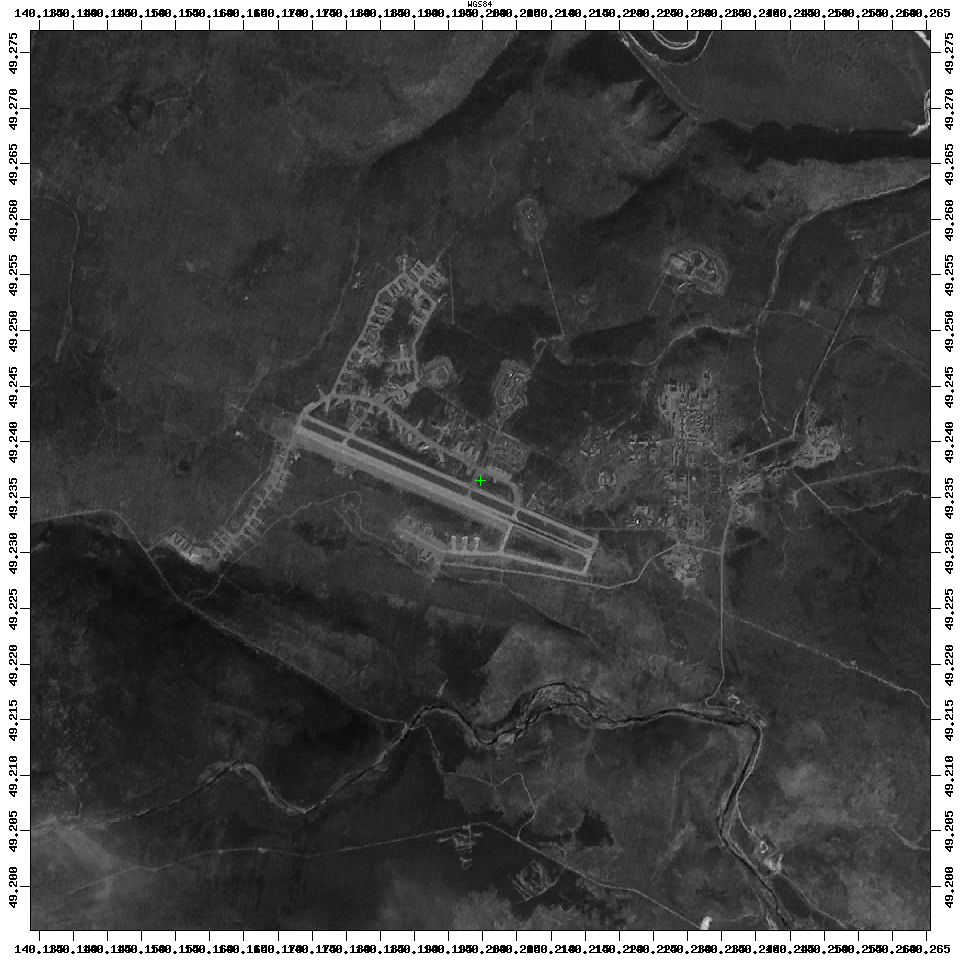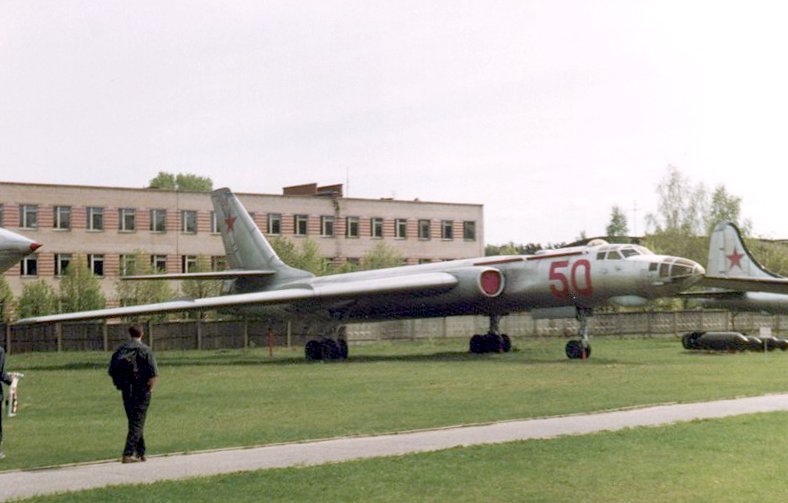|
Mongokhto
Kamenny Ruchey (also Mongokhto, Alekseyevka, and Mongohto) (Russian: Монгохто, Каменный Ручей) is an air base in Russia located 29 km north of Sovetskaya Gavan.ALEKSEYEVKA AIRFIELD, USSR CIA-RDP78T05929A001200040012-1, Central Intelligence Agency, October 18, 1965. Located just north of Vanino, it is a major military naval airfield that has 63 hardened areas. The airfield is designated by CAICA as Kamenny Ruchey, but Russian topographic maps indicate the nearby settlement northeast of the airfield is Mongokhto, which is also synonymous with the military base. The airfield was a joint [...More Info...] [...Related Items...] OR: [Wikipedia] [Google] [Baidu] |
Sovetskaya Gavan
Sovetskaya Gavan (russian: Сове́тская Га́вань, lit. ''Soviet harbor'') is a town in Khabarovsk Krai, Russia, and a port on the Strait of Tartary which connects the Sea of Okhotsk in the north with the Sea of Japan in the south. Population: It was previously known as ''Imperatorskaya Gavan'' (until 1922). Name The name of the town is often informally abbreviated to "Sovgavan" (). History On May 23, 1853, Lt. Nikolay Konstantinovich Boshnyak of the Russian-American Company ship ''Nikolay'' discovered the bay on which Sovetskaya Gavan is located and named it Khadzhi Bay. On August 4, 1853, Captain Gennady Nevelskoy founded a military post named after Admiral Grand Duke Konstantin, and renamed the bay to ''Imperatorskaya Gavan'' ('Emperor's Harbor' or 'Port Imperial'). The bay was also known to the English as Barracouta Harbour. Nikolay Boshnyak was appointed the commander of the post, which became the first Russian settlement in the area, and the p ... [...More Info...] [...Related Items...] OR: [Wikipedia] [Google] [Baidu] |
Russian Naval Aviation
The Russian Naval Aviation ( rus, Авиация Военно-морского флота России, r=Aviatsiya Voenno-morskovo Flota Rossii) is the air arm of the Russian Navy, a successor of Soviet Naval Aviation. The Russian Navy is divided into four fleets and one flotilla: Northern Fleet, Pacific Fleet, Baltic Fleet, Black Sea Fleet, and Caspian Flotilla. The air forces of the largest and most important fleets, the Northern and Pacific fleets, operate long range Tu-142 anti-submarine warfare (ASW) aircraft, Il-38 medium-range ASW aircraft, and Ka-27 shipborne ASW and search-and-rescue (SAR) helicopters. Formations operating supersonic Tu-22M3 bombers were transferred to the Russian Air Force's Long Range Aviation in 2011. The relatively small fleets, the Baltic and Black Sea, currently have only tactical Su-24 bombers and ASW helicopters in service. The small Caspian Flotilla operates An-26 and Mi-8 transports, Ka-27PS rescue helicopters, as well as some Ka-29 and ... [...More Info...] [...Related Items...] OR: [Wikipedia] [Google] [Baidu] |
Pacific Fleet (Russia)
, image = Great emblem of the Pacific Fleet.svg , image_size = 150px , caption = Russian Pacific Fleet Great emblem , dates = 1731–present , country = , allegiance = (1703–1917) (1922–1991) (1991–present) , branch = Russian Navy , type = , role = At sea nuclear deterrence;Naval warfare; Amphibious military operations;Combat patrols in the Pacific/Arctic;Naval presence/diplomacy missions in the Pacific and elsewhere , size = c. 46 Surface Warships (major surface units, light corvettes, mine warfare, amphibious) plus support ships/auxiliaries c. 23-24 Submarines (of which about 2/3 active as of 2022) , command_structure = Russian Armed Forces , garrison = Fokino (HQ)Petropavlovsk-Kamchatsky Vilyuchin ... [...More Info...] [...Related Items...] OR: [Wikipedia] [Google] [Baidu] |
310th Independent Long Range Anti-Submarine Aviation Regiment
{{Numberdis ...
31 may refer to: * 31 (number) Years * 31 BC * AD 31 * 1931 CE ('31) * 2031 CE ('31) Music * ''Thirty One'' (Jana Kramer album), 2015 * ''Thirty One'' (Jarryd James album), 2015 * "Thirty One", a song by Karma to Burn from the album ''Wild, Wonderful Purgatory'', 1999 Film and television * ''31'' (film), a 2016 horror film * 31 (Kazakhstan), a television channel * 31 Digital, an Australian video on demand service, and before 2017 an Australian community television channel from Brisbane, Queensland. Other uses * Thirty-one (card game) See also * * * * * Channel 31 (other) * Highway 31 (other) * Section 31 (other) * List of highways numbered 31 The following highways are numbered 31: International * Asian Highway 31 * European route E31 Australia * Hume Highway ** Hume Motorway ** Hume Freeway * - South Australia ** Gorge Road ** Little Para Road ** South Para Road ** Lyndoch Val ... [...More Info...] [...Related Items...] OR: [Wikipedia] [Google] [Baidu] |
Soviet Naval Aviation Bases
The Soviet Union,. officially the Union of Soviet Socialist Republics. (USSR),. was a transcontinental country that spanned much of Eurasia from 1922 to 1991. A flagship communist state, it was nominally a federal union of fifteen national republics; in practice, both its government and its economy were highly centralized until its final years. It was a one-party state governed by the Communist Party of the Soviet Union, with the city of Moscow serving as its capital as well as that of its largest and most populous republic: the Russian SFSR. Other major cities included Leningrad (Russian SFSR), Kiev (Ukrainian SSR), Minsk (Byelorussian SSR), Tashkent (Uzbek SSR), Alma-Ata (Kazakh SSR), and Novosibirsk (Russian SFSR). It was the largest country in the world, covering over and spanning eleven time zones. The country's roots lay in the October Revolution of 1917, when the Bolsheviks, under the leadership of Vladimir Lenin, overthrew the Russian Provisional Government that ... [...More Info...] [...Related Items...] OR: [Wikipedia] [Google] [Baidu] |
Soviet Air Defence Force Bases
The Soviet Union,. officially the Union of Soviet Socialist Republics. (USSR),. was a transcontinental country that spanned much of Eurasia from 1922 to 1991. A flagship communist state, it was nominally a federal union of fifteen national republics; in practice, both its government and its economy were highly centralized until its final years. It was a one-party state governed by the Communist Party of the Soviet Union, with the city of Moscow serving as its capital as well as that of its largest and most populous republic: the Russian SFSR. Other major cities included Leningrad (Russian SFSR), Kiev (Ukrainian SSR), Minsk (Byelorussian SSR), Tashkent (Uzbek SSR), Alma-Ata (Kazakh SSR), and Novosibirsk (Russian SFSR). It was the largest country in the world, covering over and spanning eleven time zones. The country's roots lay in the October Revolution of 1917, when the Bolsheviks, under the leadership of Vladimir Lenin, overthrew the Russian Provisional Government tha ... [...More Info...] [...Related Items...] OR: [Wikipedia] [Google] [Baidu] |
Anti-ship Missile
An anti-ship missile (AShM) is a guided missile that is designed for use against ships and large boats. Most anti-ship missiles are of the sea skimming variety, and many use a combination of inertial guidance and active radar homing. A good number of other anti-ship missiles use infrared homing to follow the heat that is emitted by a ship; it is also possible for anti-ship missiles to be guided by radio command all the way. The first anti-ship missiles, which were developed and built by Nazi Germany, used radio command guidance.https://airandspace.si.edu/collection-objects/bomb-guided-fritz-x-x-1/nasm_A19840794000#:~:text=The%20Fritz%20X%2C%20also%20known,the%20Henschel%20Hs%20293%20missile. These saw some success in the Mediterranean Theatre during 1943–44, sinking or heavily damaging at least 31 ships with the Henschel Hs 293 and more than seven with the ''Fritz X'', including the Italian battleship ''Roma'' and the light cruiser . A variant of the HS 293 had a TV ca ... [...More Info...] [...Related Items...] OR: [Wikipedia] [Google] [Baidu] |
Kh-22
The Kh-22 (russian: Х-22; AS-4 'Kitchen') is a large, long-range anti-ship missile developed by MKB Raduga in the Soviet Union. It was designed for use against aircraft carriers and carrier battle groups, with either a conventional or nuclear warhead. Kh-32 is the upgraded conventional/nuclear variant of Kh-22 and was accepted to service in 2016, it features an improved rocket motor and a new seeker head. Development After analyzing World War II naval battles and encounters in the late 1940s and early 1950s, Soviet military thinkers concluded that the era of large seaborne battles was over, and that stand-off attacks would be the way to neutralize and incapacitate large battle groups without having to field a similar force against them. Substituting cruise missiles for air attacks, Soviet Air Forces and Soviet Naval Aviation commanders set about to convert their heavy bombers to ''raketonosets'', or missile carriers, which could be launched against approaching enemy fleets fro ... [...More Info...] [...Related Items...] OR: [Wikipedia] [Google] [Baidu] |
K-10S
The Raduga K-10S (NATO reporting name: AS-2 Kipper) was a Soviet supersonic anti-ship missile that was usually nuclear-armed, designed by MKB Raduga. Its development began in 1955, and it entered service with the Soviet armed forces in 1961. The Kipper missile was a very large one, approximately the size of a small jet fighter, because of the rather primitive state of anti-ship missile technology in the 1950s and 1960s. This missile was never used in combat anywhere. The typical AS-2 launch platform, the Tupolev Tu-16K-10 ''Badger C'', could carry a single AS-2, semi-recessed in the bomb bay. The Kipper's long range enabled it to be launched, hypothetically, from beyond the range of any shipboard surface-to-air missiles or anti-aircraft guns of that time. The only defense against the Kipper was the naval jet fighter aircraft, operating from either an aircraft carrier or a shore airfield. In flight tests, the Kipper cruised on its approach to a target at an altitude of about 10,00 ... [...More Info...] [...Related Items...] OR: [Wikipedia] [Google] [Baidu] |
Tupolev Tu-142
The Tupolev Tu-142 (russian: Туполев Ту-142; NATO reporting name: Bear F/J) is a Soviet/Russian maritime reconnaissance and anti-submarine warfare (ASW) aircraft derived from the Tu-95 turboprop strategic bomber. A specialised communications variant designated ''Tu-142MR'' was tasked with long-range communications duties with Soviet ballistic missile submarines. The Tu-142 was designed by the Tupolev design bureau, and manufactured by the Kuibyshev Aviation and Taganrog Machinery Plants from 1968 to 1994. Formerly operated by the Soviet Navy and Ukrainian Air Force, the Tu-142 currently serves with the Russian Navy. Developed in response to the American Polaris programme, the Tu-142 grew out of the need for a viable Soviet ASW platform. It succeeded the failed Tu-95PLO project, Tupolev's first attempt at modifying the Tu-95 for maritime use. The Tu-142 differed from the Tu-95 in having a stretched fuselage to accommodate specialised equipment for its ASW and survei ... [...More Info...] [...Related Items...] OR: [Wikipedia] [Google] [Baidu] |
Tupolev Tu-16
The Tupolev Tu-16 ( NATO reporting name: Badger) is a twin-engined jet strategic heavy bomber used by the Soviet Union. It has been flown for almost 70 years, and the Chinese license-built Xian H-6 remains in service with the People's Liberation Army Air Force. Development In the late 1940s, the Soviet Union was strongly committed to matching the United States in strategic bombing capability. The Soviets' only long-range bomber at the time was Tupolev's Tu-4 'Bull', a reverse-engineered copy of the American B-29 Superfortress. The development of the notably powerful Mikulin AM-3 turbojet led to the possibility of a large, jet-powered bomber. The Tupolev design bureau began work on the Tu-88 ("Aircraft N") prototypes in 1950. The Tu-88 first flew on 27 April 1952. After winning a competition against the Ilyushin Il-46, it was approved for production in December 1952. The first production bombers entered service with Frontal Aviation in 1954, receiving the service designation ... [...More Info...] [...Related Items...] OR: [Wikipedia] [Google] [Baidu] |

.jpg)


